
Tea Architecture Terminology
茶室 (chashitsu)
tea room
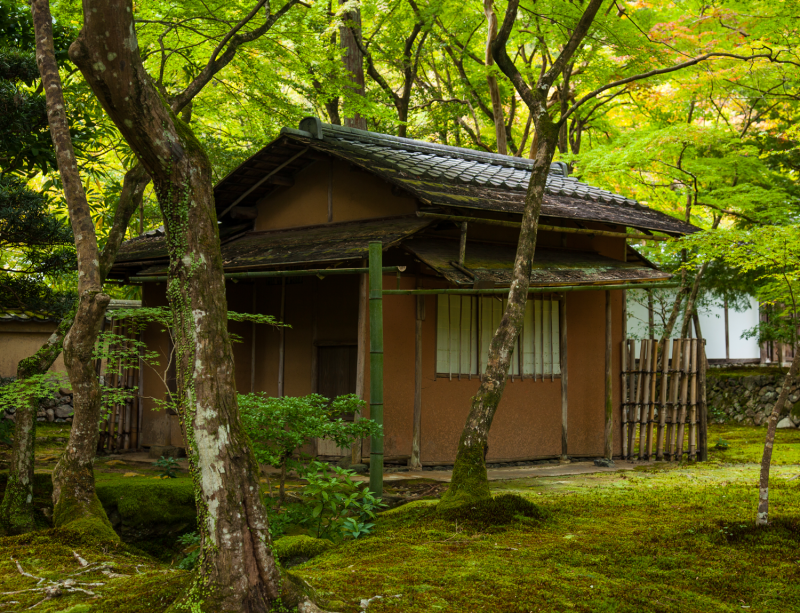
The space in which the host and the guests meet for making, serving, and drinking tea. Considered by some to be a sacred space where host and guests meet, separate from the profanity of the secular world.
畳 (tatami)
woven straw and rush mats
Standard flooring for traditional Japanese rooms, including tea rooms. The standard size is approximately 90 cm x 180 cm, although sizes vary from region to region with Kyoto-sized mats being larger than Tokyo/Edo-sized mats.
小間 (koma)
a small (tea) room
Generally speaking, a tatami room that is 4.5 tatami mats (approx 270 sq cm) or smaller.
広間 (hiroma)
a large (tea) room
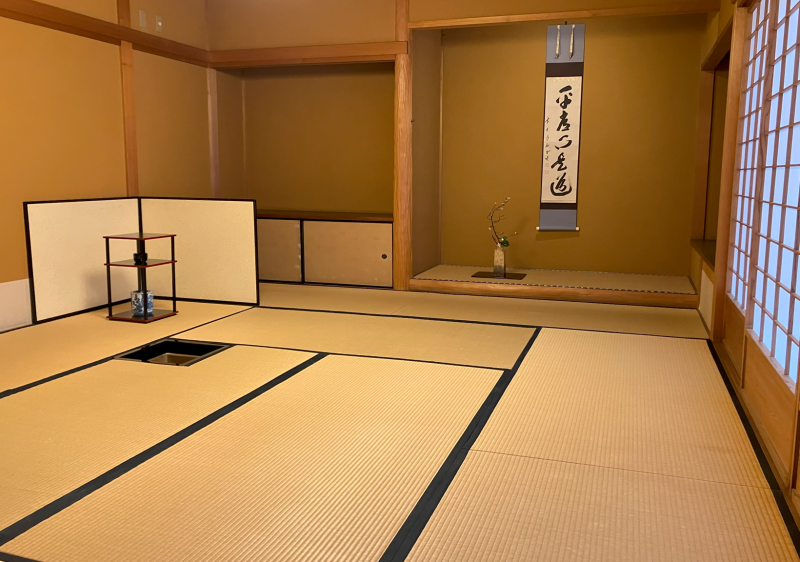
Generally speaking, a tatami room that is 4.5 tatami mats (approx 270 sq cm) or larger.
点前座 (temaeza)
host's mat
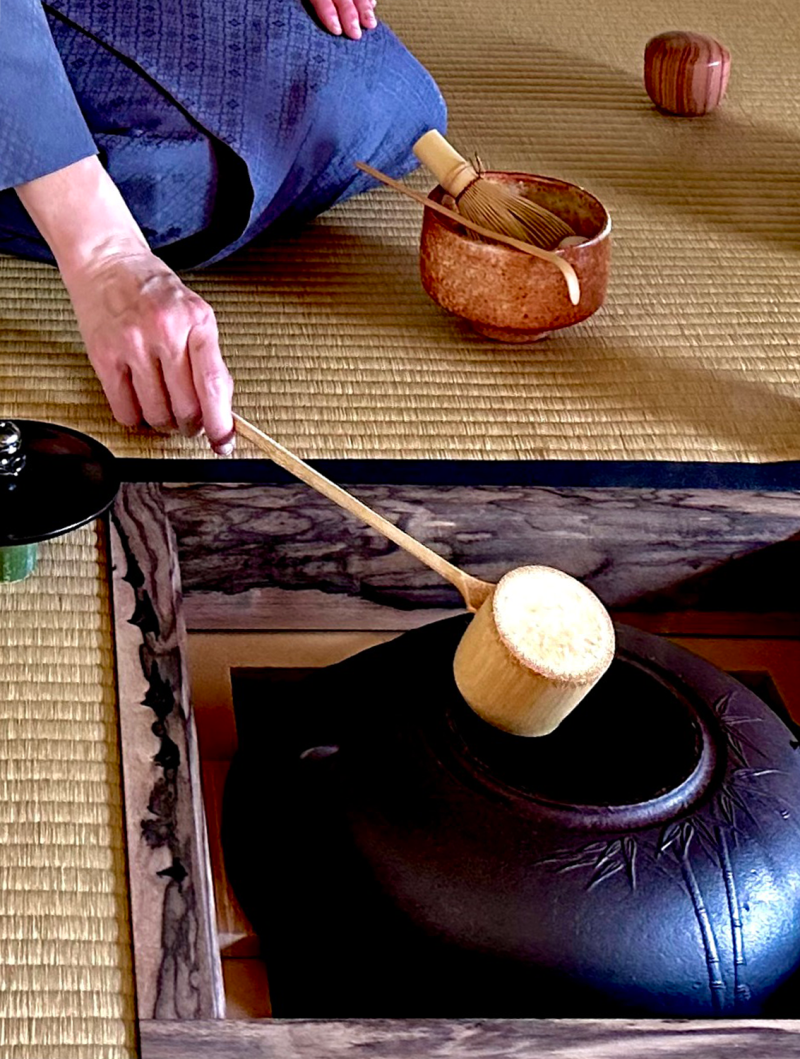
The place in the tea room where the host sits to make tea.
台目 (daime)
a shortened tatami mat
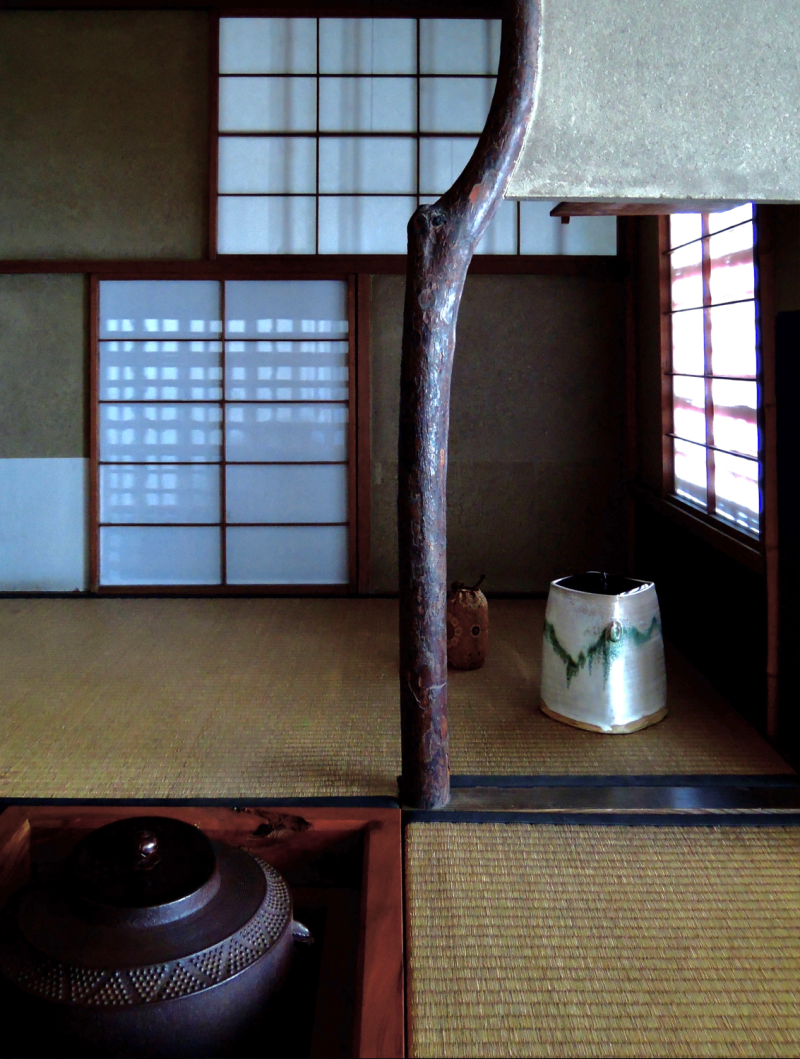
Generally speaking, a tatami mat that is only 3/4 length (approx 135 cm) of a standard tatami (approx 180 cm).
床の間 (tokonoma)
alcove

A space in the tea room, often recessed, where a hanging scroll, flowers, and sometimes other items are displayed.
躙り口 (nijiriguchi)
crawl-through entrance
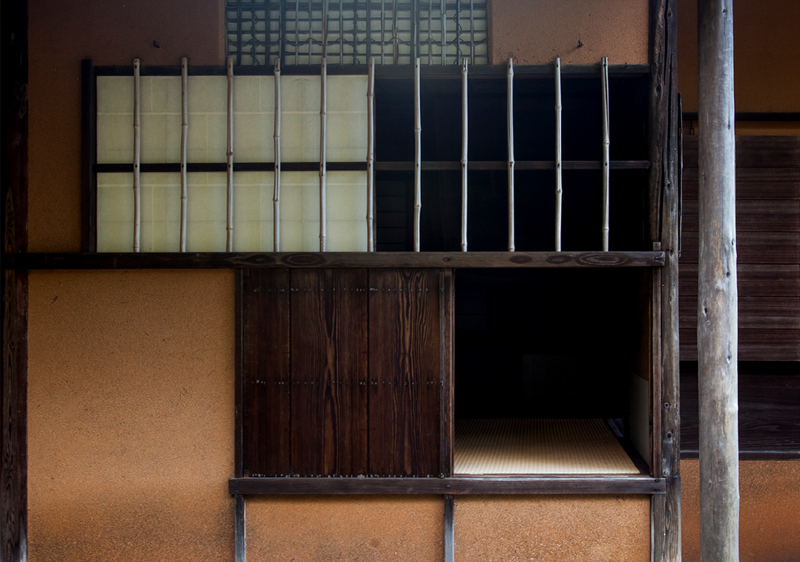
A small guest entrance to a tea room (approx. 60 x 66 cm) raised above the floor of the garden. Before entering, guests remove their sandals, place their knees on the threshold, and scoot into the tearoom.
貴人口 (kininguchi)
entrance for nobles/dignitaries
A tall entrance through which guests may enter by only slightly bowing their heads.
窓 (mado)
window
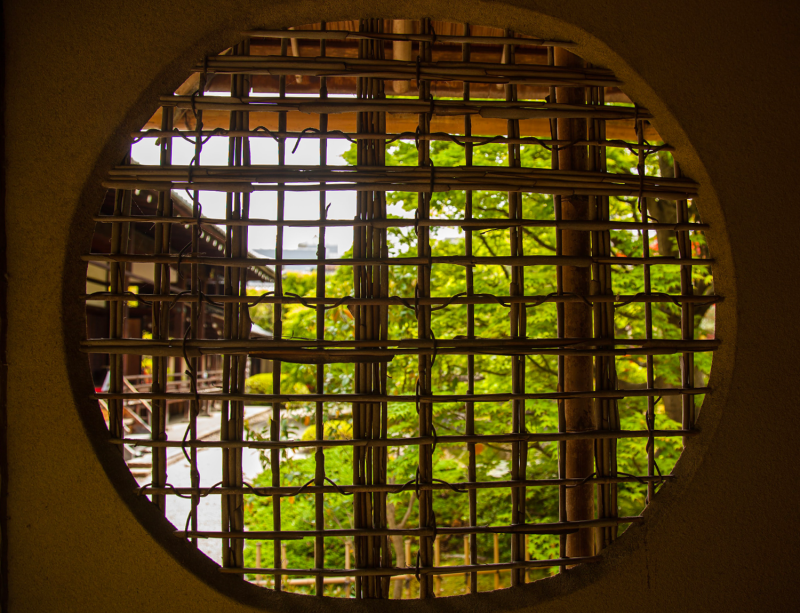
Most tea rooms have windows of different sizes and shapes. The primary purpose is usually to let in light, not for viewing what is outside of the tearoom.
天井 (tenjō)
ceiling
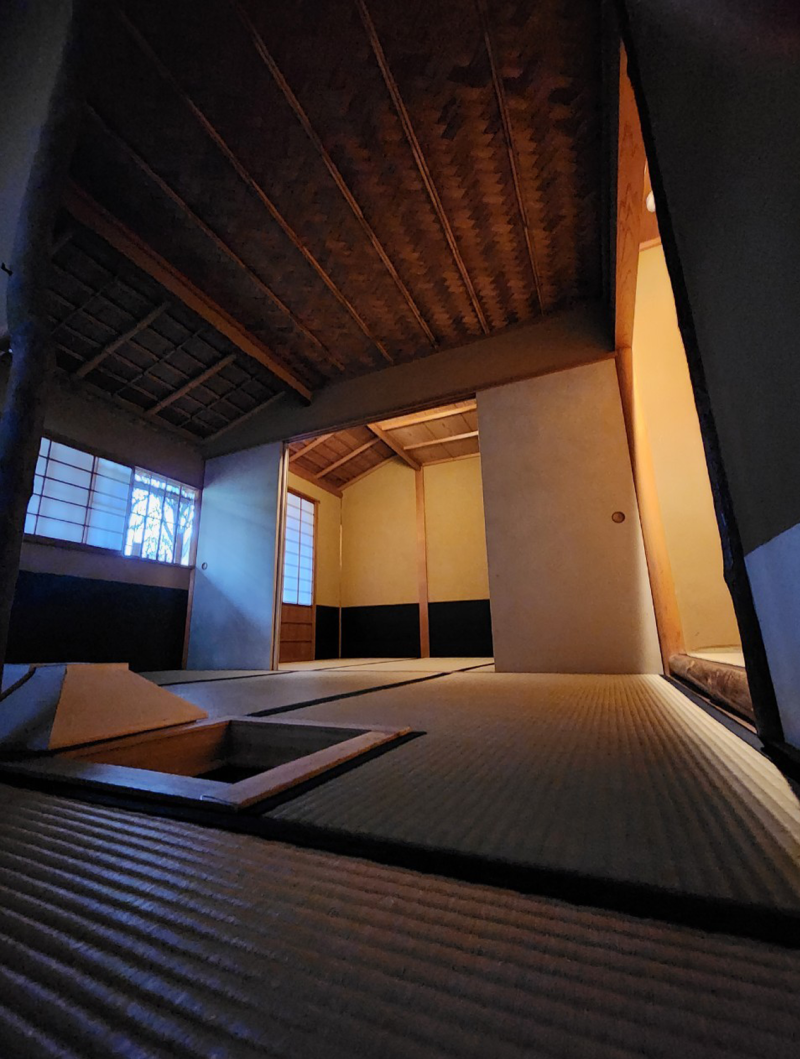
Depending on the size of the room, the construction of the ceiling varies. In a small tearoom, the ceiling is often of varying levels or angles and made with a patchwork of different materials.
刀掛け (katana-gake)
shelf to hang swords
A wooden rack, very close to the entrance of the tea room, where warriors were expected to leave their swords.
寄付 (yoritsuki)
anteroom
A space for guests to literally and figuratively leave their "baggage" before participating in a tea gathering.
待合室 (machiai shitsu)
waiting room
A space for guests to gather before walking through the garden and entering the tea room.
水屋 (mizuya)
preparation room
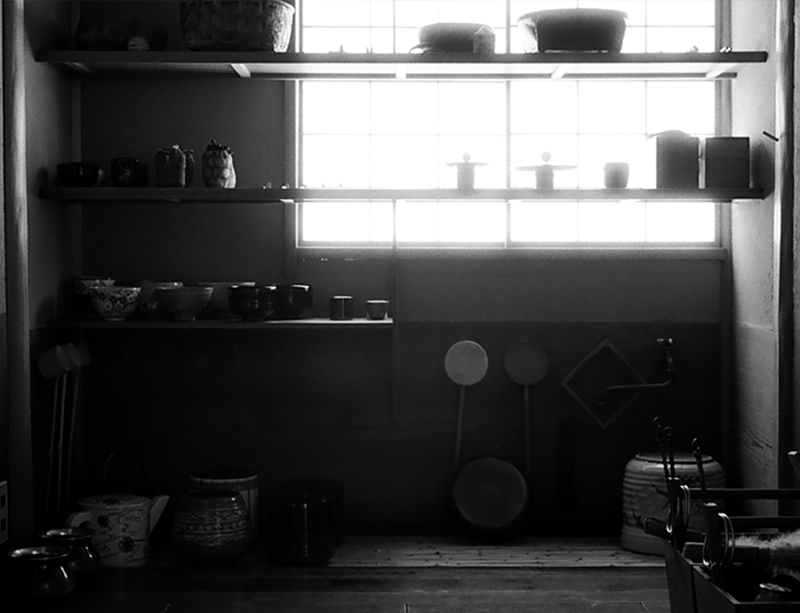
(lit. water room) Space near the tea room where the necessary utensils, food, and other materials are prepared by the host.
庭 (niwa)
garden
Refers to a general garden. A cha-niwa 茶庭 (lit. tea garden) has specific elements unique to the garden of a teahouse.
露地 (roji)
garden leading to a tea room
(lit. dewy ground) A garden through which guests journey on their way to the teahouse entrance. It has all the necessary elements for a formal tea event.
外露地 (soto roji)
outer garden
The part of the tea garden that is spatially closer to the outer gate and the outside world; it usually includes a waiting bench for guests (koshikake machiai).
内露地 (uchi roji)
inner garden
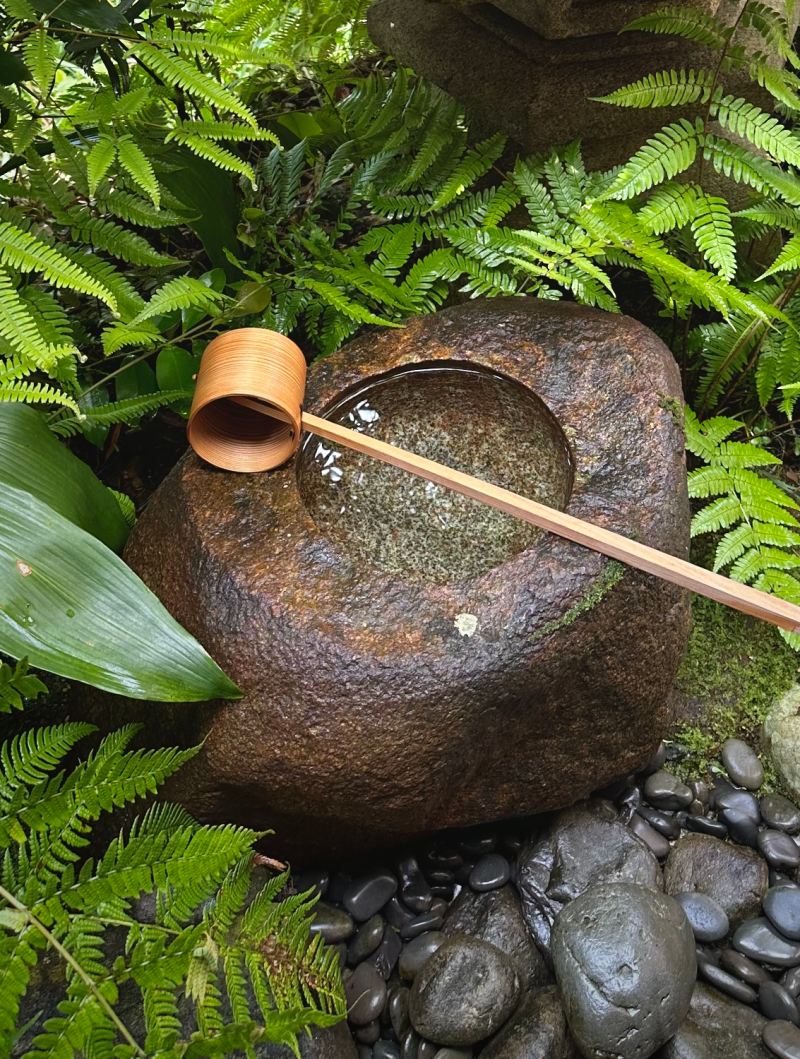
The part of the garden that is spatially farther from the outside world and closer to the teahouse; it usually includes a crouching stone basin (tsukubai).
外門 (soto mon)
outer gate

The gate (usually big and sturdy with a large bolt) that separates the tea space from the outside world.
中門 (chū mon)
middle gate
The gate (often partial with a symbolic latch) that separates the outer garden from the inner garden. It is a signal to the guests that they are entering an area that is closer to the tea room.
蹲踞 (tsukubai)
crouching stone basin
A fresh-water basin near the entrance to the tea room. Before entering the tea room, the guests crouch down here and, using a ladle, purify their hands and mouth.
塵穴 (chiriana)
hole for depositing garden waste

(lit. dust pit) A small crevice next to the tea room entrance. After cleaning the garden, the host places fresh, moist leaves in it to show that the garden has been purified.
腰掛待合 (koshikake machiai)
waiting bench
A location for tea guests to wait either before the tea event begins or during the break/intermission (nakadachi) before re-entering the tearoom to drink thick tea.
石燈籠 (ishi tōrō)
stone lantern
Stone-carved garden lanterns that are placed in various parts of the tea garden.
雪隠 (setchin)
privy
(lit. snow cover) A euphemistic term for the toilet in the tea garden.